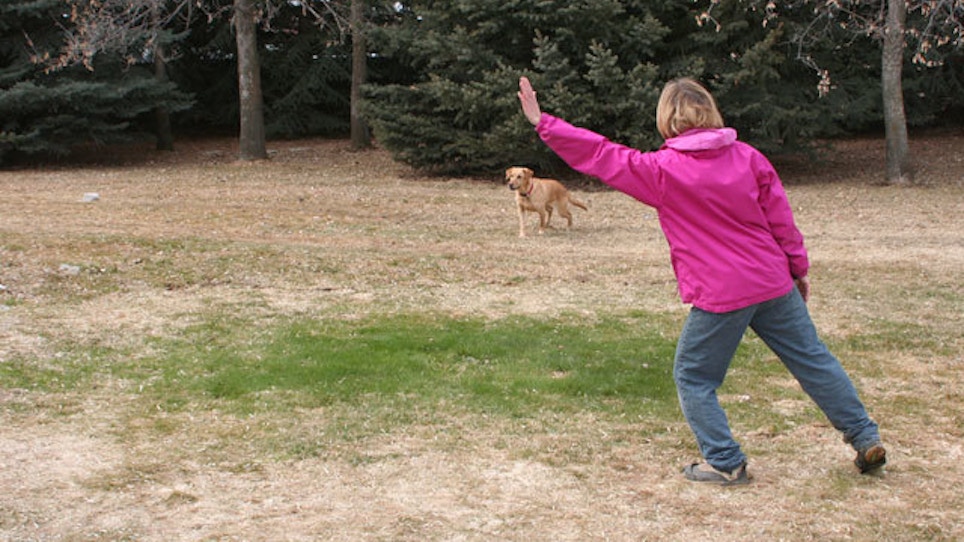If you’ve never been to a retriever field trial, do yourself a favor and attend one. Among the many mind-blowing things you’ll see are retrieves of marked birds at ridiculous distances, and equally impressive, unmarked blind retrieves — birds the dogs haven’t seen fall — at distances that are nearly as great, performed multiple times in a row.
But are blind retrieves at extreme distances really necessary for the hunter, the guy who may have no interest in trialing? Lonny Taylor, surprisingly, says that it’s more applicable than you might think.
“You want a dog to be able to take a blind for at least 200 yards,” he says. Taylor has been a professional retriever trainer for decades and is now based in Mt. Hope, Kansas. “Anything over 200 yards you should go and pick up yourself. You see 300-yard retrieves in field trials because they’re sorting out the best dogs for that day. But you always want to train farther, or past, what you think you’ll eventually have to require your dog to do. So I teach the dogs to go until I tell them to stop.”
Blind retrieves are typically taught later in a dog’s training progression, after he’s completed his basic obedience. That includes, in Taylor’s case, collar conditioning, force fetching, various retrieving drills with marked birds, the ‘sit’ whistle, and most important, training in “back” casting.
“Everyone’s always excited about doing an ‘over’ cast (casts that direct a dog either to the left or to the right) Taylor says, “but ‘back’ casts (directing a dog straight back to a marked bird) are the ones that tend to count the most. For one reason or another, dogs tend to hang up on ‘back’ casts, but you need that cast in order to drive the dog on out of there to get that bird. That’s why, when I’m teaching a dog casting drills, I’ll probably have him do three to four ‘back’ casts to one ‘over’ cast.”
“When the dog gets to the point where it understands the casts and can do them in the yard, I begin teaching blind retrieves. I start with a drill I call pattern blinds,” he says. “I’ll set up four or five places in my yard at about 80 to 100 yards out and show the dog all of those places. Then what I’m able to do is send the dog toward one place, stop him (with a sit whistle) and cast him toward another. When they’ve got that down, I go into the field and teach what I call sight blinds. I’ll walk the dog out, stop him about 20 yards from a pile of bumpers, show them to him, then walk him back a ways, turn around, and line him to that pile. Then I’ll show him another pile. I’ll usually teach two sight blinds at a time, then repeat the process and teach him another two.”
Taylor stresses repetition. “A good work ethic has a lot to do with how successful you are,” he says. “I do these drills until the dog has it down, and then, finally, teach him the difference between a mark and a blind. To do that, I’ll line the dog to a blind, and then, after he returns, have him retrieve a mark (Taylor enlists a gunner to shoot into the air and then throw the bumper for the marked bird). Then I’ll line him to another blind. I call that drill a ‘blind, mark, blind.’ When you set up your mark, make sure you pick a spot a good 45 yards or more away from your blind, because dogs will tend to want to go back to the mark. If they do, stop them, say ‘no,’ and give them another cast to the blind. When the dog has that down, increase the distances. It’s all part of developing their confidence and skills. Blinds are called ‘blinds’ because the dog is operating on blind faith that what you’re telling him — there’s a bird out there to retrieve — is true.”
Invariably, glitches will occur somewhere along the training process. “All dogs are different,” Taylor says. “I have dogs that just absolutely fly through the training process; those are the ideal ones. But then you have dogs that hit certain points and hang up. Most of the time it comes down to the confidence factor of the dog believing you. If that’s the case, then the thing to do is to take a couple steps backward before moving forward again. All you accomplish when you go too fast is that you lose your patience, and then the dog loses confidence in you. So I have a thing I call the easy button,” he says. “Let’s say you’re trying to get the dog to take a certain cast and he’s just not getting it; it’s going downhill. I keep a bumper in my back pocket, and I throw the dog an easy marked retrieve, then praise the hell out of him when he brings it back. That way, you can start building his confidence back up.”
Although the bulk of blind retrieve training is done on dry land, the last stage Taylor teaches is transitioning the dog to water. At this point, complicated drills aren’t necessary; his emphasis is on building the dog’s trust so that, when it’s sent on a blind, it knows there will be a bird at the end of it.
“If you’ve done your homework on land, water work is usually a lot easier,” Taylor says. “Again, though, the dog has to believe you. You blow the whistle, the dog sits and looks at you, you give him a cast, and the dog takes it. It’s all about building on the confidence that you’ve slowly been developing.
“And confidence,” he says, “is what a blind retrieve is all about.”






